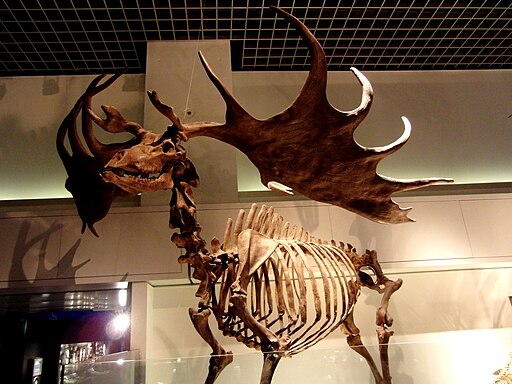The Giant Deer
Megaloceros, also known as the “Irish Elk,” was a giant species of deer that roamed Europe and Asia during the last Ice Age, around 400,000 to 8,000 years ago.

| Meaning | Great horn [Megal-o-ceros] |
| Pronunciation | MEG-ah-LOH-seh-ros |
| When: | Pleistocene (about 400,000–8,000 years ago) |
| Where: | Europe, Asia Europe and Asia |
| What: | Mammal (giant elk) |
| Weight: | Estimated around 700 kg (1,540 pounds) |
| Length: | Approximately 3.5 meters (11.5 feet) including antlers |
| Diet: | Herbivorous (ate grasses and other vegetation) |
| Discovered: | First described by Johann Friedrich Blumenbach in 1799 |
This impressive creature stood about 7 feet tall at the shoulders, and its enormous antlers could span up to 12 feet from tip to tip, making it one of the largest deer ever to exist.
Megaloceros lived in open woodlands and grasslands, where it grazed on grasses, leaves, and other vegetation.
Despite its nickname, the “Irish Elk,” it was neither limited to Ireland nor closely related to modern elk.
The sheer size of its antlers made Megaloceros an awe-inspiring sight, and these antlers were likely used for display and during mating season to attract mates and compete with rivals.
